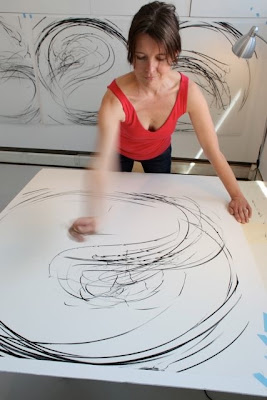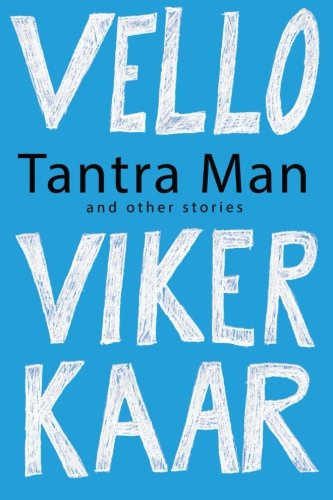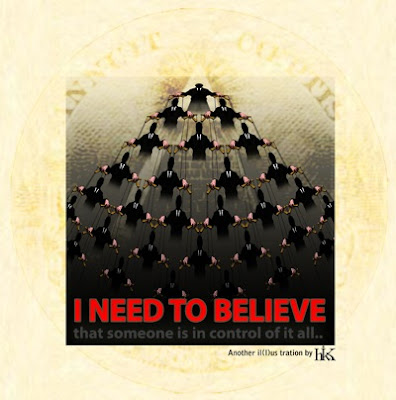
The Estonia shown to foreigners — or, more accurately, the side of itself Estonia chooses to show — has never struck me as the real Estonia. Brochures with strings of suspicious superlatives about the most meteor craters per square kilometer of island, Laetalu’s record 70 plant species per square meter, or even the country’s impressive number of Olympic Gold Medal winners per capita have never held appeal, and seeing them in print brings to mind the desperation of Kansas farm towns I once witnessed on a car trip with my parents across the prairie: offerings such as the world’s tallest prairie dog, the world’s deepest hand-dug well, the world’s largest coal shovel, and the world’s largest ball of twine. What Kansas had to sell, I thought, was a safe, cheap, Africa. Endless, sweeping vistas with a lower likelihood that one might be eaten by a lion. And so it is with Estonia: its nature is what holds the appeal.
And not just nature. What, to me as an outsider, makes Estonia remarkable in the larger context of the overpopulated, over-hyped consumer society in which we live, is the subtlety of its nature.
But subtlety, by definition, doesn’t lend itself to easy description, which makes it doubly difficult to market. And most marketers would surely look askance upon someone who advocated the appeal of sitting against a tree and staring into the forest to watch light play against pines, or lying on one’s back staring into a Navitrolla sky.
Perhaps, then, representing the subtlety of Estonia is best left to artists. Perhaps art is the only medium which can to justice to Estonia’s subtlety?
The work of artist Jaanika Peerna does it justice. Whether speaking of her drawings or her installations, the Estonian artist’s work is devoid of superlatives and chest-beating declarations. Her drawings, in particular, bring to mind a rural landscape in a particularly cold March: the earth’s still-frozen surface with life below quietly waiting its turn. And he who takes time to contemplate it, somehow sensing the northern energy of spring which will not burst forth, but will emerge in its own paced, measured fashion which, like the Estonian temperament itself, can occasionally deeply frustrate outsiders.
Peerna lives in the picturesque Hudson Valley north of New York City, but spends summers in Estonia. She did coursework in Estonian art schools while earning degrees in art education from Tallinn University and the University of Art and Design in Finland. Her work cannot help but reflect her background and environment. “What I got from Estonia was a sensitivity to light and to the subtle, slow workings of nature,” Peerna says. “Every time I return to Northern Europe, I am reminded of that patience in nature – no big forms, no impressive anything. Only the quite flow of things.”
But to appreciate what you have, you sometimes have to lose it, and being an hour by train from the heart of New York City, for what it has deprived her of, has certainly given her perspective which informs her work. When she and David Rothenberg, her writer-philosopher-jazz-musician husband moved into their home in Cold Spring, New York, deep inside the Hudson Valley, she found herself yearning for open space and horizons. “I caught myself painting long horizontal works with horizon lines which were only visible here if you climbed to a mountain top.”
In her second graduate school experience, working for a Masters of Fine Arts at SUNY New Paltz, Peerna turned to inner landscapes, as well as works with micro- and macro levels of reference, microscopic imagery as landscape. No matter how her art developed, her yearning for an Estonian landscape somehow surfaced in her work.
“I am very aware that the reason Estonia’s nature influences my work so much is because I moved away from there,” she says. “If I was living in Estonia, I might not notice the things I described. So there is some nostalgic and idealistic tone to it all. But what can I do?”
Since the late 1990s, she has quietly recorded Estonia’s subtlety in drawings and video installations and shown them in galleries in New York, Lisbon, Aarhus, and Dubai. Two years ago, after a show at the Galerie Lavignes Bastille in Paris, two of her large drawings were acquired for the French National Art Collection.
Peerna is an Estonian artist better known outside Estonia than she is inside her homeland. This, in large part, comes from not having aggressively pursued a reputation on the Estonian art scene, but it also comes from having developed as an artist outside the traditional Estonian path. A graduate of Tallinn Pedagogical University, Peerna studied art teaching, rather than art itself. “For a career as an artist in Estonia,” she says, “I did not have the right credentials.”
To an outsider, “making it” on the Estonian art scene seems a struggle one might do well to avoid. Estonian artists seem to live in a revolving struggle: Scrape to buy paints and canvas; build a collection of works to show; wait two years to show at a decent gallery; pay the gallery owner; buy alcohol for other poor artists to drink at your opening; endure the obligatory speech about the significance of your work; hope your kultuuri kapital stipend will cover the costs when your work doesn’t sell; and beg any buyers to pay you black cash to escape social taxes. Then do it all over again and again until you die.
But home is in the blood, and sooner or later the artist must journey there. Especially when she’s been painting it for so long. Peerna has slowly begun to close the gap to her homeland, and her first bridge to the Estonian art world was provided by the New York Estonian House in 2001. Since then, she has had only two shows in Estonia (in 2001 at the Art Academy Gallery and at Linnagaleri 2002). She is quietly developing a following among Estonia’s few serious collectors. This June, she will have a solo exhibition at Tallinn’s ArtDepoo, her first show in Estonia for eight years, which she hopes will be one more quiet, subtle step toward being thought of as an Estonian artist.
Being recognized by the art world anywhere is no easy task, and it is certainly far more difficult in the United States than in Estonia. Despite Raul Meel’s rather sweeping, critical view of the Estonian art world in a 2006 Eesti Ekspress, where he wrote at length about lack of public funds for financing exhibitions and general artist survival, getting grants in the United States is even more difficult, because there are so many artists and so little government support.
Statistically speaking, for a nation with an adult population in its prime of only slightly over one-half million, one living artist breaking through in the West would be an achievement. For Estonia to have even a pair (Raul Meel, Jaan Toomik) whose names are familiar to art collectors and gallerists in New York is remarkable in itself.
Jaanika Peerna is too modest to add her name to that list, but she is working toward it. She was recently interviewed and photographed for inclusion in an upcoming American book called PRIME, profiles of international women who are in the periods of their lives where they are at their most productive. The book includes just fifty notable women, including political heiress Caroline Kennedy, Supreme Court Justice Ruth Bader Ginsburg, supermodel Christy Turlington, and Estonian/American artist Jaanika Peerna.
“I’m flattered to be included in the book,” Peerna says, “though I thought my ‘prime’ was ahead of me! There’s so much more to do.” More to do includes shows in her adopted home of New York, but also a kind of spiritual fulfillment and satisfaction for the soul through closer attachment to the art world of her native land.
Jaanika Peerna’s work is at ArtDepoo, June 2nd through June 30th.



